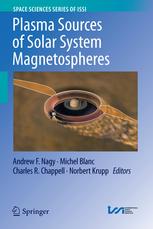

Most ebook files are in PDF format, so you can easily read them using various software such as Foxit Reader or directly on the Google Chrome browser.
Some ebook files are released by publishers in other formats such as .awz, .mobi, .epub, .fb2, etc. You may need to install specific software to read these formats on mobile/PC, such as Calibre.
Please read the tutorial at this link: https://ebookbell.com/faq
We offer FREE conversion to the popular formats you request; however, this may take some time. Therefore, right after payment, please email us, and we will try to provide the service as quickly as possible.
For some exceptional file formats or broken links (if any), please refrain from opening any disputes. Instead, email us first, and we will try to assist within a maximum of 6 hours.
EbookBell Team

0.0
0 reviewsThis volume reviews what we know of the corresponding plasma source for each intrinsically magnetized planet. Plasma sources fall essentially in three categories: the solar wind, the ionosphere (both prevalent on Earth), and the satellite-related sources.
Throughout the text, the case of each planet is described, including the characteristics, chemical composition and intensity of each source. The authors also describe how the plasma generated at the source regions is transported to populate the magnetosphere, and how it is later lost. To summarize, the dominant sources are found to be the solar wind and sputtered surface ions at Mercury, the solar wind and ionosphere at Earth (the relative importance of the two being discussed in a specific introductory chapter), Io at Jupiter and – a big surprise of the Cassini findings – Enceladus at Saturn. The situation for Uranus and Neptune, which were investigated by only one fly-by each, is still open and requires further studies and exploration. In the final chapter, the book offers a summary of the little we know of Uranus and Neptune, then summarizes in a comparative way what we know of plasma sources throughout the solar system, and proposes directions for future research.